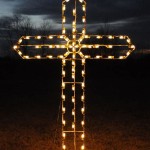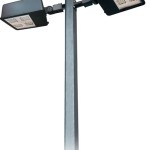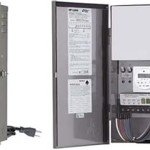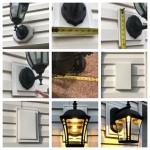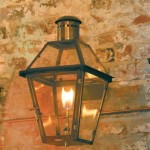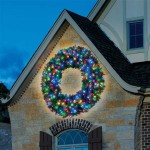How to Position Outdoor Lighting
Outdoor lighting plays a crucial role in enhancing the aesthetics and functionality of any outdoor space. Proper positioning of lighting fixtures can transform a bland yard into a captivating oasis, ensuring safety, security, and an inviting ambiance. This article explores essential considerations for effective outdoor lighting placement, empowering you to illuminate your outdoor areas with finesse.
Determine Lighting Objectives
Before embarking on the positioning process, it's paramount to define the specific purposes of your outdoor lighting. Are you aiming to illuminate pathways for safe navigation? Highlight architectural features or landscaping? Create a warm and inviting atmosphere for gatherings? Perhaps deter potential intruders with security lighting? A clear understanding of your objectives will guide your lighting choices and placement strategies.
For instance, if pathway illumination is a priority, you'll need fixtures strategically placed along walkways, ensuring sufficient light for safe passage. Conversely, if you're seeking to accentuate a beautiful tree, strategically placed spotlights can showcase its unique contours and texture. By outlining your lighting goals, you can select the appropriate types of fixtures and their ideal positions.
Consider the Layout and Structure of Your Outdoor Space
Once your lighting objectives are established, it's crucial to carefully analyze the layout and structure of your outdoor space. This involves understanding the topography, existing structures, and the flow of movement within the area. This information will determine the best locations for fixtures and the types of lighting that best complement the existing landscape.
For example, tall trees or fences can provide natural "screening" for light, while open areas may demand more widespread illumination. Identifying natural focal points, such as a patio or a water feature, allows you to strategically place fixtures to draw attention to these areas. Taking into account the flow of movement, ensuring pathways are well-lit, and highlighting areas of potential hazards are key considerations, promoting both safety and aesthetics.
Choose the Right Lighting Techniques
The positioning of outdoor lighting is intricately tied to the lighting techniques employed. Various techniques are available, each offering distinct advantages and aesthetics. Understanding these techniques is crucial for achieving the desired lighting effects.
Uplighting
Uplighting is a technique that illuminates objects or structures from below. This technique is highly effective in accentuating vertical elements, such as trees, statues, or the facade of a building. By directing light upwards, uplighting creates dramatic shadows and highlights the textures and shapes of illuminated objects.
Downlighting
Downlighting, as the name suggests, directs light downwards from a source positioned above the subject. This technique is frequently used for general area illumination, providing a wide, evenly distributed light for walkways, patios, and seating areas. It can also be used to create ambient lighting for a relaxed and inviting atmosphere.
Backlighting
Backlighting is a technique that illuminates objects or structures from behind, creating a halo effect. This technique is particularly effective for highlighting delicate features, such as plants, foliage, or water fountains. Backlighting also adds depth and dimension to the scene, enhancing the visual appeal of your outdoor space.
Silhouetting
Silhouetting involves positioning light sources behind an object, creating a dark silhouette against a brighter background. This technique is often employed to accentuate the outline of a structure or a group of objects. Silhouetting is a visually striking technique that adds drama and intrigue to your outdoor lighting design.
Utilize Layered Lighting
For a truly captivating outdoor lighting design, consider utilizing layered lighting, a technique that combines different types of lighting to create depth and dimension. This approach involves a combination of ambient, task, and accent lighting, each playing a distinct role in illuminating the outdoor space.
Ambient lighting provides general illumination, creating a sense of safety and security. Task lighting, as the name suggests, focuses on specific activities, such as reading or dining. Accent lighting highlights specific features, adding interest and visual appeal to the overall design. By combining these elements, you can create a harmonious and functional outdoor lighting system that meets your specific needs.
Consider Energy Efficiency and Sustainability
In today's environment, it's essential to prioritize energy efficiency and sustainability when designing your outdoor lighting. This involves choosing energy-efficient LED fixtures that consume less power while delivering brighter light. Additionally, incorporating timers and motion sensors can further optimize energy consumption, ensuring your outdoor lighting operates only when necessary.
The choice of light bulbs also plays a significant role in energy efficiency. Opt for LED bulbs, as they consume significantly less energy than traditional incandescent bulbs, saving you money on your electricity bills. Moreover, LED bulbs have a longer lifespan, reducing the need for frequent replacements and resulting in lower long-term costs.
Remember, proper positioning of outdoor lighting is not merely about aesthetic appeal. It's about creating a safe, functional, and inviting environment for your outdoor space. By carefully considering the factors discussed in this article, you can illuminate your outdoor areas with finesse, transforming them into truly captivating havens.

How To Use Landscape Lighting Techniques

A Landscape Lighting Guide For Beginners Metrogreenscape

How To Use Landscape Lighting Techniques

Where To Place Landscape Lighting Drost

4 Ways To Use Uplights Outdoor Lighting Rensen House Of Lights

How To Use Landscape Lighting Techniques

Where Should I Position My Outdoor Lights Bondilights

Outdoor Lighting Placement Kichler

Where To Place Landscape Lighting Drost

How To Position Outdoor Lights Digital Trends
